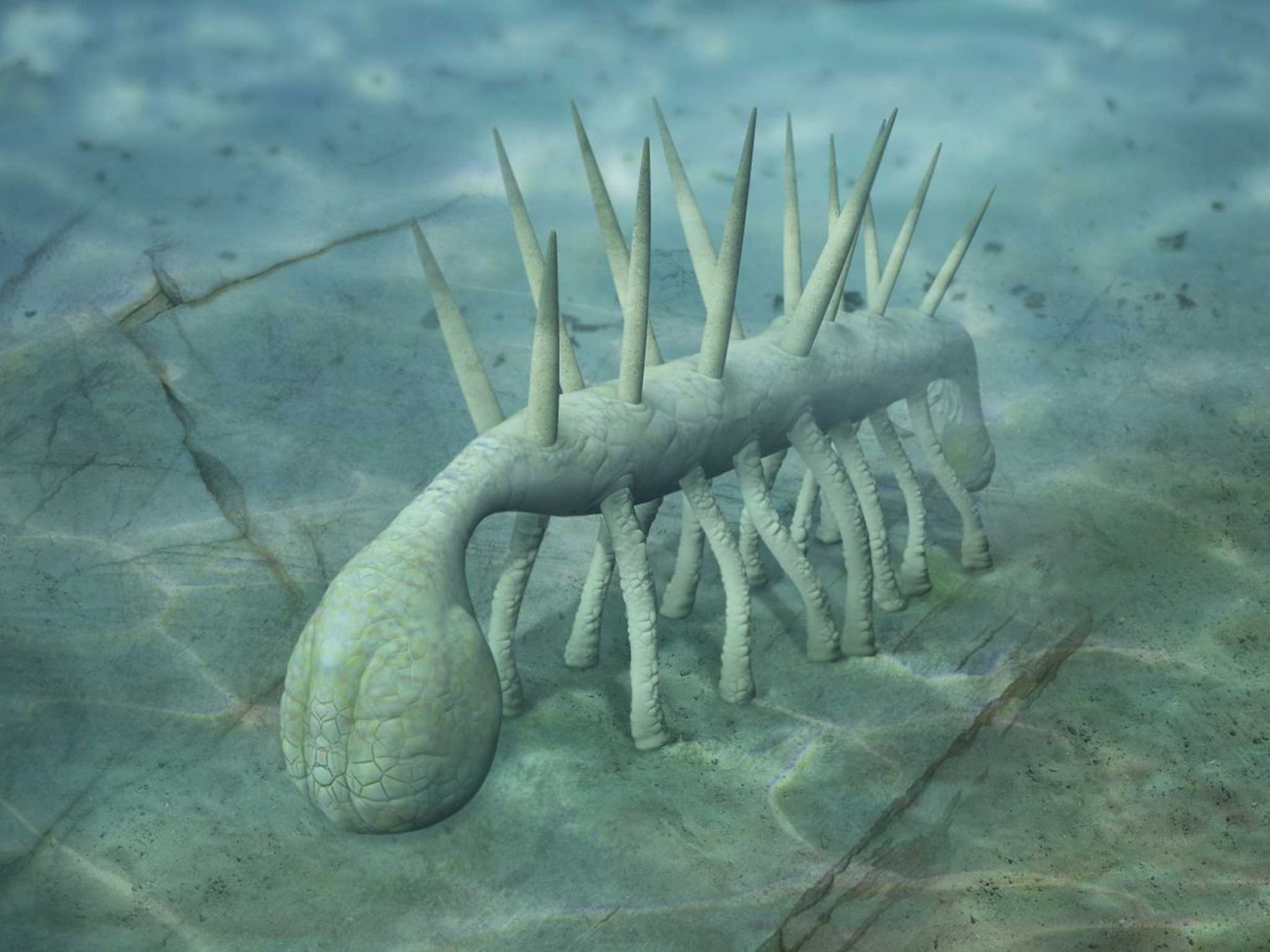Hallucigenia revealed: The most surreal creature from strangest period in history of life on Earth
Scientists solve mystery of a creature from the Cambrian lagoons

If Salvadore Dali were God, he would surely have designed an animal that looked like Hallucigenia. It has been described as the most surreal creature that lived in the strangest period in the history of life on Earth, more than 500 million years ago.
After more than four decades of studying fossilised imprints, scientists believe they have finally nailed Hallucigenia’s position in the tree of life, and in the process discovered its only living descendants.
Hallucigenia, named because of its dream-like, trip-inducing appearance, is one of the many marine animals that rather abruptly appear in the fossil record during a period in pre-history known as the Cambrian explosion, a biological bang that detonated the evolution of complex life-forms about 542 million years ago.
Until the Cambrian explosion, life had been bumbling along for about three billion years, with evolution producing nothing much more animate than a bath sponge. After the explosion, creatures with complex body plans evolved that walked, crawled, swam and burrowed – and Hallucigenia was one of them.
Scientists were so thrown by Hallucigenia when its small fossils were first analysed 40 years ago that they thought its front end was its back end, and its top was its bottom. They even thought it was an evolutionary one-off that had left no descendants alive today.
However, scientists now believe they have finally been able to locate Hallucigenia’s position in evolutionary history by showing that it is the ancestor of a small group of worm-like creatures with short, stubby legs that can be found today, living unobtrusively in the undergrowth of tropical forests.
Martin Smith and Javier Ortega-Hernandez of Cambridge University have detected key physical similarities between Hallucigenia and the so-called velvet worms, known more formally as the onychophorans – the first time zoologists have been able to rule conclusively on the creature’s true role in history.
Their study, to be published in the journal Nature, is based on a detailed analysis of high-magnification images of the fossils of Hallucigenia, which grew no bigger than about 3.5cm long, showing five key characteristics that link the species to the velvet worms.
Among the most important features is the way the claws at the end of its limbs are arranged. Under an electron microscope, each claw has two or three successive layers of cuticle nestled one within the other, like the layered skins of an onion.
Dr Smith said: “We think this enabled them to grow a new set of claws before they shed their skins, which they had to do to grow. A very similar feature is found in the claws and jaws of the velvet worms, and no other animal shares this particular characteristic.
“It means that the animals do not have to wait for a new claw to form after shedding their skin to grow – they already have one ready formed,” he explained.
Zoologists have also not always been completely sure which end of Hallucigenia is the front and which is the back, although Dr Smith said his research clears this up – the front has two or three pairs of appendages and the back has a rounded end where its body-length gut probably terminates.
It is now clear that the fearsome spikes on Hallucigenia’s back, which were once confused for stilt-like legs, are almost certainly a defensive mechanism against the increasing number of predators that emerged during the Cambrian explosion.
Fossils: Burgess Shale
The Cambrian explosion is named after the geological period that began about 541 million years ago, when a remarkable variety of marine animals first appear in the fossil record.
Most fossils are formed from the hard parts of living organism, such as bones or shells. However, details of the soft body parts of Cambrian creatures can be seen in a rock formation known as the Burgess Shale in the Canadian Rocky Mountains.
Hallucigenia was just one of many bizarre animals to live at this time. Other creatures included a fearsome predator called Anomalocaris, armed with two vicious-looking jaws and large eyes, and Wiwaxia, which looked like a Viking helmet with spikes.
For evolutionists, this period is one of the most interesting in the 3.5-billion-year history of life on earth because this was when many of the complex body plans seen in today’s animals are first detectable, even though they must have evolved from something earlier in history.
“It’s often thought that modern animal groups arose fully formed during the Cambrian explosion. But evolution is a gradual process,” said Martin Smith of Cambridge.
“Today’s complex anatomies emerged step by step, one feature at a time. By deciphering ‘in-between’ fossils like Hallucigenia, we can determine how different animal groups built up their modern body plans,” he said.
Join our commenting forum
Join thought-provoking conversations, follow other Independent readers and see their replies
Comments